[Chris Cirmo, Dean, College of Letters and Science, University of Wisconsin-Stevens Point]
Welcome to the U.W.-S.P. Colleges of Letters and Science Community Lecture Series. Tonight, we have the opportunity to talk about U.S.-Cuba relations, and we have a couple of our experts on campus involved in this. The title of tonight’s lecture is “Rebuilding U.S.-Cuba Relations.” And our speakers are from a variety of areas and experiences in Latin America.
Our first speaker is Anju Reejhsinghani, who’s an associate professor of history and international studies at U.W.S.P. where she teaches courses on Latin America and the Caribbean, transnational sports and the African and Asia diasporas in the Americas. She’s a graduate of Princeton University where she got her A.B., the London School of Economics where she has a diploma in economics, and the University of Texas at Austin where she has both her M.A. and PhDs in history.
In January 2013, Dr. Reejhsinghani developed and led one of the U.W.-System’s first short-term for – for-credit study abroad programs to Cuba, now a recurring program.
I’m trying to get an invite to that program.
A spectacular – a specialist in modern Cuba, her current book project draws on research conducted in numerous U.S. and Cuban archives with a generous support of the College of Letters and Science at U.W.S.P.
Our second speaker is Jennifer Collins. Jennifer is an associate professor of political science. Her research examines the political participation by indigenous and social movements in Ecuador and Bolivia and in New Left political projects in both countries.
She and I have often talked about trying to do a special program in Ecuador ourselves.
She’s a recipient of two Fulbright Scholar – Fellowships and has published several articles and book chapters. Her most recent article reexamined the concept of populism in light of the New Left and was published in the Journal of Latin American Studies.
She’s currently working on a book manuscript that explores the role of social movements and their relationships with the Correa and Morales administrations. She teaches classes in comparative politics, Latin American politics, international development, and peace studies. During the summer of 2016, she co-led a study-abroad trip to Cuba with Dr. Reejhsinghani.
So, it’s my pleasure to welcome our first speaker – our first speaker, Dr. Anju Reejhsinghani of the Department of History.
Anju.
[applause]
[Dr. Anju Reejhsinghani, Associate Professor, Departments of History and International Studies, University of Wisconsin-Stevens Point]
Thank you.
[slide with the title screen for the lecture, Rebuilding U.S.-Cuba Relations, featuring two hands shaking, one with the colors of the American flag and one with the colors of the Cuban flag]
It’s my pleasure to be here today with Dr. Collins talking to you about U.S.-Cuba relations, which is a topic very close to my heart. I’ve had the privilege now of going to Cuba for about 16 years, and I’ve seen the ups of that relationship, I’ve seen the downs of that relationship, and I have to say right now we’re sort of in a – a waiting period, which we’ll talk more about. But the nice thing is, having had that experience myself, we’ve now been able to share it with our students. So, today our presentation will build both on our own knowledge of Cuba through our study and our work as well as the perspectives of our students, who – many of whom are here today. So, thank you for coming.
Okay, let’s see, hopefully I’m doing this right.
This is our most recent group who went with us in summer of 2016.
[slide featuring a photo of the students who were part of U.W.S.P.s latest study abroad in Cuba class, titled, A new age in U.S.-Cuba Relations]
They represented students from this campus and also some, again, who are here, and also other folks who are from the community. I’m happy to say that this picture was taken in front of the U.S. Embassy. Now, even a couple years before we would not have been able to say that. We could have said we were in front of the U.S. Interests Section, which was started in 1977 under President Carter. However, in reality, –
[Dr. Anju Reejhsinghani]
– we wouldn’t have been able to get that close.
A few years before, if we’d gone to the Interests Section, as we did once in, I believe, it was 2013. We drove by it in our bus, and we were told move along quickly because it was not allowed even to be near the Interests Section. It was seen as threatening to the United States. And so, this is a happy face, a new age of U.S.-Cuba relations, especially during the Obama period. However, if you turn around, you’ll see kind of a different face. Something that’s representative of the not so recent past.
[slide featuring a photo of a series of flagpoles erected by the Cuban government to obscure the electronic billboard in the front of the U.S. Interests Sections building, titled, – or back to the old days?]
This is a series of flagpoles that were built in about 2006 by the Cuban government as a way of letting the U.S. Interests Section know that they didn’t appreciate the propaganda that was rolling on a digital billboard on the Interests Section wall. That were saying anti- or counter-revolutionary things –
[Dr. Anju Reejhsinghani]
– that were obviously meant to provoke the Cuban – Cuban government. And so, in retaliation, the Cuban government built over 130 flagpoles which – that then were blotting out the digital billboard. Okay?
So, these still remain, although certainly don’t serve the negative propaganda purpose that they did before. We have a more positive relationship. But it’s very possible, moving forward, that we won’t have such a positive relationship. That building U.S.-Cuba ties in a more positive direction is going to take work, and if we don’t commit ourselves to that, possibly we’ll see a return to these bad old days.
Alright.
When we think of the bad old days of U.S.-Cuban relations, we think of things like the Bay of Pigs invasion. This is from a museum that we went to this past summer –
[slide featuring a photo of a display of Cuban magazines with their cover stories on the 1961 Bay of Pigs invasion in a Cuban museum]
– near the Bay of Pigs which is known as Playa Giron. And this, of course, is a museum from the Cuban perspective, which does not see the Bay of Pigs as a fiasco, as reason to be ashamed of our government, but rather as a success. And, again, if you’re not familiar with this, this is the attempt by the United States to overthrow the regime of Fidel Castro by having a force of exiled Cubans invade –
[Dr. Anju Reejhsinghani]
– the island from the south and try to make it seem as though the entire country was overthrowing the Castro regime.
In reality, though, that failed miserably. We actually had a – a propaganda success for the Castro regime. And this exhibit here in the museum says, in – in English, “After Giron all of the peoples of America became a little more free.” In the Cuban governments eyes the success at Playa Giron, at Bay of Pigs, simply meant that the United States could no longer have whatever way it wanted in Latin America, that it was possible to stand up to the United States.
Now, we also think of moments like the Cuban missile crisis in 1962. This is a photograph taken with our group –
[slide titled, 1962 Cuban Missile Crisis, featuring a photo on one side of Fidel Castros hidden bunker on the right and a bulleted list of consequences on the left including – the removal of Soviet offensive missiles from Cuba, removal of U.S. offensive missiles near the U.S.S.R., U.S. regime changes become less overt and Cuba builds connections to the nonaligned world while still accepting Soviet subsidies]
– in 2013 of a hidden bunker that has now been celebrated, its actually now open for tourism in – of course, like everything else, right? – in Havana. The day we went there, it had – it was about a couple months after the 50th anniversary of the Cuban missile crisis, and there was a little plaque that announced that this was a space where Fidel, etc. had gone to plot, you know, what they would if they were invaded or attacked by the United States.
Now, the missile crisis itself, the details are fairly well known. We know that this was about the fact that there was Soviet missiles in Cuba, that ultimately those get removed, in an arrangement that suits the Soviet Union by having missiles removed from Turkey. However, for Cuba –
[Dr. Anju Reejhsinghani]
– the Cuban missile crisis wasn’t the unmitigated success of the Bay of Pigs invasion. In reality, this is a moment where Cuba is actually sidelined from their own missile crisis. They become less able to go ahead and – and change things in the direction they wanted to.
So, what this does for Cuba is it makes them realize that they are not fully an autonomous country under the Soviets just like they were not fully an autonomous country under the control of the United States decades earlier. However, for the United States, we seem as though we’ve accepted the reality of the Cuban revolution. We seem as though we’ve accepted Castro. And in reality, what we’ve done is move our opposition underground. Our opposition to the Cuban revolution goes sort of more underground as well.
So, the blockade, as it’s known in Cuba, or the embargo, as it’s known in the United States, is something that still exists today. I think there’s this notion that with Obama and normalization we’ve actually gotten rid of the embargo. And in reality, it’s now codified into law. The Congress would need to change many of the aspects of the embargo to fully undo it.
It was actually initiated during the Eisenhower administration, but it has been strengthened over time –
[slide titled, U.S. embargo/blockade of Cuba, featuring three broad explanations, the WHAT – a patchwork of laws that only Congressional action can fully undo. The WHEN – initiated by the Eisenhower Administration in Oct. 1960, strengthened during subsequent administrations, and regularly opposed by the U.N. and other international bodies. And the WHY – initially intended to punish Cuba for its rejection of U.S. hegemony, part of a larger blockade that excluded Cuba from the O.A.S., I.M.F., World Bank, and Inter-American Development Bank, and the removal of the embargo becomes contingent on the U.S. call for regime change, market reforms, and democratization in Cuba]
– not by every administration, but often the way in which to punish Cuba has been in the United States to simply tighten the embargo, tighten the embargo.
Now, it’s served many different purposes, right? It was initially an attempt to punish Cuba for standing up to the United States, for having a government that was in opposition to what we wanted, for expropriating lands from U.S. corporations, for engaging in radical reform, etc., etc.
Over time, however, and especially as the Cold War has ended, this has become a larger attempt to isolate Cuba, to make Cuba less secure, less safe, less desirable a place –
[Dr. Anju Reejhsinghani]
– to live, and, over time, removal of that embargo becomes contingent on regime change of one sort or another, whether it’s overt regime, as in no more Castros, which of course over time there will be no more Castros, but more likely in the sense of market reforms, democratization, open elections, embrace of human rights, etc. So, in reality then, the embargo becomes a wedge against Cuba even into the present day. Something that we – we threaten to continue unless they change. This conversation does eventually change over time, and eventually we do start removing parts of the embargo, but only those that can be done through executive action.
Now, for decades, Cuba was also isolated from multilateral organizations. They were excluded from the Organization of American States, I.M.F., World Bank, etc. They were isolated in the United Nations. And what we’re seeing now is that our policies in Cuba have actually further isolated the United States, and that normalizing relations with Cuba has helped the United States to get back into the graces of multilateral institutions and in regions like Latin America.
Okay.
The travel ban is a little bit different. It’s not exactly the same thing. The travel ban is codified in the Treasury Department. The Treasury Department has an Office of Foreign Assets Control. So, theoretically, you’re not being kept from going to Cuba –
[slide titled, U.S. Travel ban to Cuba, encompassing three broad areas – the WHAT – Treasury Departments Office of Foreign Assets Control (O.F.A.C.) and Cuban Assets Control Regulations (C.A.C.R.), the WHEN – effectively banned U.S. travel to Cuba from 1963-1977, the travel ban was essentially lifted during Carters presidency in 1977, the Regan Administration initiated new travel restrictions in 1982, the Clinton Administration tightened the embargo but opened people-to-people exchanges, and the George W. Bush Administration severely restricted travel opportunities in mid-2004, and the WHY – keeps hard currency from supporting the Cuban state, and prevents Americans from experiencing Cuba and challenging the rationale for the embargo and other punitive measures]
– because we can’t really keep people from going where they want to go. What we can do, though, is prohibit them from spending money there. The Treasury Department has a series of regulations that are pertaining to Cuba that essentially, over a period of time, have banned U.S. travel effectively if not in every case. And what I mean by that is tourism has not been allowed for – for most of this period from 1963 to the present. Now, there were some periods in which there was some openings. Mostly during the Carter era, in which case the travel ban basically got lifted. During Ronald Reagan, it gets reimposed in 1982. The Clinton administration does this very odd balancing act of tightening the embargo, making it very difficult for Cuba to trade with the U.S. –
[Dr. Anju Reejhsinghani]
– or to have other external trading relationships at the same time that he opens people-to-people exchanges. And my first trip to Cuba was actually in January 2001. At that time, Clinton was still president. We didn’t know who was going to be the next president because there was that whole Bush verses Gore thing going on, right? But that was part of a larger group of people-to-people exchanges. So, that was something that was embraced for a number of years in the 1990s.
George W. Bush severely restricts travel to Cuba in 2004. And he does that in the lead up to his reelection campaign. His first administration he basically ignored the issue of Cuba until it became something that he wanted to obviously get a lot of votes out of the – the south Miami, south Florida crowd, okay?
Now, the reasons for the travel ban have to do, again, with opposition to Cuba. If you’re keeping hard currency away from the Cuban state, if you’re not supporting them economically, then it’s like a form of embargo, right? You’re keeping more money, more resources out of their hands. This was not relevant so much during the Cold War. Yes, it would have been nice for Cuba to have more hard currency, to have more visitors from the United States, but they still had Soviet subsidies. After the end of the Cold War, the collapse of the Soviet Union, the loss of those subsidies, and the collapse of Cuba’s economy, it becomes critical to have that hard currency coming in one form or another, whether through tourist dollars or visitors who are Cuban-Americans or through the form of remittances. So, keeping the travel ban going is a way of strangling the Cuban state.
There’s another reason, though, especially during the George W. Bush years, to have the travel ban, which is to keep Americans from experiencing Cuba directly. One of the many challenges we had when we were recruiting for our study abroad program was simply trying to deal with a lot of the misinformation about Cuba because people didn’t know folks who’d been Cuba. They didn’t have family who’d been to Cuba. And it was really a challenge to try to, you know, give people a different perspective without literally taking them there. So, in many cases, what – what it took for changing people’s minds about Cuba is actually bringing them to Cuba, letting them experience Cuba, talk to Cubans, especially their own peers if they’re students, or – or faculty if they’re faculty, etc., and to have an experience that they can relate to. That’s been a major rationale for keeping that travel ban going.
Now, this isn’t all negative, despite the fact that we tend to think of that. I’m sure you guys recognize him. There have been efforts at rapprochement. And they haven’t only been democratic regimes. I think one of the misinformation about the Cuba relationship –
[slide titled, Efforts at rapprochement, featuring a cartoon of George W. Bush with a helmet with a swastika on it and holding a binder of Cuban-American relations upside-down next to a list of rapprochement efforts including – John F. Kennedy – Bay of Pigs prisoner swap in 1962, anti-hijacking accord signed under Richard Nixon in 1973, loosening of the embargo by the Ford Administration in 1975, the opening of the Dual Interests Sections under Jimmy Carter in 1977, the prosecution of anti-Cuba terror under the Regan Administration in the 1980s, and the Migration accords reached under the Clinton Administration in 1994]
– is that Democrats have opened up Cuba, Republicans have closed up Cuba. It’s not nearly that simple. There have been a lot of political expediencies. For instance, a lot of Obama’s changes happened in his second term as opposed to his first. But in the John F. Kennedy years, despite the Bay of Pigs debacle, his administration was somehow able to find a way to have a prisoner swap. The exiles imprisoned for food and medicine to the Cuban government. In Richard Nixon’s years, hijacking became a major problem. It’s hard for us to imagine post-9/11 but people used to hijack planes all the time, and a lot of times they’d fly them to Cuba, or they’d fly them to the United States. So, there was a hijacking accord signed between Nixon and Castro. Ford helped to loosen the embargo a little bit. Carter obviously was probably the one who – who did the most, especially creating these Interests Sections that we saw at the very beginning.
The prosecution of terror acts against Cubans and the Cuban government was something that Reagan actually was involved with, despite otherwise being pretty negative –
[Dr. Anju Reejhsinghani]
– toward the Cuban revolution. And in Bill Clinton’s years, the desperate rafters who were coming in the 1990s signal a reason for Clinton and Castro to sit down and make arrangements about migration issues. Now, clearly the Cubans have a negative feeling about George W. Bush. This is from the Museum of the Revolution in Havana. He’s holding his plan for a free Cuba –
[return to the Efforts at rapprochement slide]
– upside down because the implication is that he can’t read. He’s wearing, of course, the swastika, I guess backwards or something. And hes – the sign next to him talks about how he’s a cretin who is actually strengthening socialism because of all his ignorant actions. So, not a lot of respect there.
[new slide titled, Obama Changes to Cuba Policy, 2009-2013, featuring two bulleted lists one of his ACHIEVEMENTS – including ending Cuban-American restrictions on travel and remittances and opening up family reunification, transitioning from general to specific license requirements for 12 classes of travelers, permission of limited non-Cuban-American remittances to Cuba, increases direct charter flights from U.S. to Cuba, approval of Cuban purchase of food and medicine on credit, and increases in diplomatic contact – as well as his LIMITATIONS – pushback against U.N. and O.A.S. member states publicly calling for an end to the embargo, continued use of covert action and democracy promotion (U.S.A.I.D), continued funding of Radio And T.V. Marti, which overtly seeks regime change, and a return to a continuation of Clinton-era openings]
Now, there have been changes, obviously, under President Obama, but they took place in stages. Roughly 2009 and 2011 were the two major periods in which he engaged in this. Now, some of the achievements that were accomplished, the very first achievement was allowing Cuban-Americans unlimited access to their family members in Cuba. If you had an uncle, a grandparent, a daughter, etc., in Cuba, you were allowed to visit that person as much as you wanted to. You could send that person as much as you wanted to in the form of a remittance.
For those of us who weren’t Cuban-American, it was a little more difficult, but he did eventually make people-to-people exchanges happen from 2011 onward, which allowed us to have our trip in 2013. If you were a non-Cuban, you could send remittances to Cuba. You weren’t allowed to send whatever you wanted, but you could still send some money. We had more charter flights. We had the Cuban government being able to buy food and credit – food and medicine on credit. We had more diplomatic contact between the two governments. Now, these sound fairly minor, and –
[Dr. Anju Reejhsinghani]
– that’s because they are fairly minor. They’re essentially a continuation of the Clinton-era opening, which is a continuation of the Carter-era opening, right? There’s not a whole lot new here. And that was one of the big criticisms of President Obama before 2014. He wasn’t taking big, bold strokes. He was simply allowing for some more opening. He didn’t want to really have that sit down between the two governments because it was risky, politically risky, both among democrats and among republicans.
So, some of the reasons that the government does begin to move in that direction is because there’s a lot of pushback in the United Nations, which votes year after year after year to condemn the U.S. embargo, in the Organization of American States, which pressures the United States to rescind the exclusion of Cuba. Despite that, though, we are putting millions of dollars towards so-called democracy promotion efforts, including the U.S. Agency for International Development, creating a Cuban Twitter, and engaging in all sorts of covert actions to the irritation of the Cuban government. We are funding arms of propaganda, the radio and TV Marti which are coming out of south Florida, which are basically trying to, you know, force propaganda against the – the revolution. It gets jammed by the Cubans, but nonetheless we’re spending a lot of money there. And ultimately this is a incremental policy. It’s important enough, though, that it’s enough for us to go to Cuba in January 2013.
Study abroad basically ceased to Cuba during –
[slide titled, First U.W.S.P. Cuba study abroad program, January 2013, featuring a photo of this first study abroad class taken in a cabana on a Cuban beach]
– the second George W. Bush administration, and it reopened in 2011 when President Obama said, Yes, if you have a legitimate reason to go, if you’re one of 12 traveling categories, you can go. And one of those, of course, was students. Now, what that meant was we could create our own program, and, believe me, it took a lot of doing.
[Dr Anju Reejhsinghani]
From 2011 to 2013 I was working on this a lot.
This was our first group. We’re sitting on the beach in Varadero. We decided, Okay, we can’t be tourists, we can’t enjoy the beach because, after all, that wouldn’t be acceptable under our category of educator and educate – and students. So instead, we had class on the beach, which is awesome. The papers were flying everywhere, but we had a fantastic time.
The next year, we continued the program. And this is my – my second group –
[slide titled, Second U.W.S.P. Cuba study abroad program, January 2014, featuring a photo of the class taken in Havana]
– we went and here is the Plaza de la Revolucion in Cuba, in Havana. This has Che obviously in the background. Camilo Cienfuegos is the other guy. Another important revolutionary. And so, here’s the group celebrating being able to experience Cuba themselves. And, again, a very diverse group. We had some students from Minnesota as well.
But until the normalization process begins –
[Dr. Anju Reejhsinghani]
– this is a very difficult endeavor. And we are one of the only small regional public schools that are going. It’s almost entirely private schools or almost entirely wealthy schools, right? And so, for a school like ours to continue this program, we really need a little more ease with all of this so it’s not so – so difficult on our end. Ultimately, we do find this bombshell, late 2014. You turn on the TV, you got Obama speaking here live, youve got Raul Castro speaking in Havana live, both of them announcing simultaneously the resumption of diplomatic relations, not immediately. It’s going to take time –
[slide titled, The Normalization Bombshell, Dec 14,2014, featuring quotes from PRESIDENT OBAMA – Today the United States of America is changing its relationship to the people of Cuba. Neither the American, nor the Cuban people are well served by a rigid policy that is rooted in events that took place before most of us were born. I believe that we can do more to support the Cuban people and promote our values through engagement. – and also quotes from Raul Castro – Today, despite the difficulties we have embarked on the task of updating our economic model in order to build a prosperous and sustainable socialism. I call upon the Government of the United States to remove the obstacles hindering, or restricting ties between peoples, families, and citizens of both countries, particularly restrictions on travelling, direct post services, and telecommunications.]
– but the first of many steps toward normalization.
Normalization itself is, kind of, an odd term because there was really no normal relationship between the U.S. and Cuba. But nonetheless, President Obama said we are changing our relationship with the people of Cuba. Neither us nor the Cuban people have been served by a rigid policy that took place – that’s rooted in events that took place before we were born. And he believed that we could support the Cuban people best through engagement.
Now its a little bit different tone with Raul Castro, who is the younger brother of Fidel, who has been effectively in charge since 2006 and officially in charge in Cuba since 2008. He said, “Today, despite the difficulties, we’ve embarked on the task of updating our economic model in order to build a prosperous and sustainable socialism.” So, normalization is portrayed as a way to better Cuba financially, to help it move toward –
[Dr. Anju Reejhsinghani]
– a more market-oriented socialism while not selling out the goal of the Cuban revolution.
[return to The Normalization Bombshell slide]
“I call upon the Government of the United States to remove the obstacles hindering or restricting ties between peoples, families, and citizens of both countries, particularly restrictions on traveling, direct post services, and telecommunications.”
[Dr. Anju Reejhsinghani]
So, for the Cubans, the announcement of normalization is a victory because what it means is now the United States is unilaterally moving towards a more sane policy. The United States, what we’re saying is the former policy was ineffective and there needs to be a change. But I think, as Dr. Collins is going to explain to you, there’s a lot more going on behind the normalization announcement.
[Dr. Jennifer Collins, Associate Professor, Department of Political Science, University of Wisconsin-Stevens Point]
Okay.
Good evening, everybody.
Though, yeah, as we come to this really fascinating moment of December 17th, it was actually my birthday, in which this big announcement was made –
[slide titled, How did we get to Dec. 17,2014? What events lead to the breakthrough, featuring a photo of President Obama and Leader Raul Castro shaking hands at the Summit of the Americas]
– and it really did take everybody by surprise. And so, I’m going to start out by just talking about some of the background things that happened leading up to this and this really momentous, kind of, announcement in December of 2014. And I’ll – and Ill say also that, I mean, its – it – all of this – this, sort of, negotiations that took place more or less over the span of about two years before we get to this announcement, the State Department of the United States was not informed about this, and the Cuban Foreign Ministry was also not directly involved. This was taking place at, sort of, the highest levels of the relationship between these two – our two governments. So, really, really interesting that we get to this.
And -and obviously, this is Raul Castro shaking the hand of President Obama –
[return to the How did we get to Dec. 17,2014? slide]
– at the Summit of the Americas.
And it’s a really fascinating story. Who knows –
[new slide titled, A seminal moment, featuring two photos, one of Patrick Leahy, Democratic congressman from Vermont, and one of the Cuban family who approached Congressman Leahy when he was in Cuba on a peacemaking visit]
– maybe somebody will make a movie about it one of these days. But it – it – one of the – some different elements of this start, first of all, over here with Patrick Leahy, who’s the democratic congressman from Vermont, and he has been a longtime supporter of normalizing or having better relations with Cuba and, sort of, an advocate for that.
Back in 2013, in February –
[Dr. Jennifer Collins]
– he went to Cuba on, sort of, a peacemaking mission – peacemaking visit to the island. And when he was in Cuba at that time, he was approached by this woman over here.
[return to the A seminal moment slide]
She was married; she was the wife of one of the members of the Cuban Five.
The Cuban Five was a –
[Dr. Jennifer Collins]
– a group of five Cuban people who were sent by the government basically, sort of, to, in Miami, to spy on the exiled community in Miami who were engaged in terrorist actions, planning terrorist acts, and were suspected by the Cuban government of basically planning and carrying out terrorist acts in Havana. And so, the Cuban Five were essentially Cuban spies who were operating in Miami, infiltrating the exiled community to try to find out what was happening and for potential attacks, terrorist attacks, in Cuba.
And, in the mid-1990s, the Cuban Five were arrested by the United States government, put on trial, and sent to prison. And basically, they had been in prison for about 17 years. There had been problems with this case, and, in fact, there had been courts in the United States that determined that the process was unfair. But in any event, they were in prison. And so, the wife of – of Herardo Hernandez there approached Leahy, and by this time she was in her mid-40s and she was concerned, her husband had been in prison for 17 years, that she would never be able – they would never be able to have children if, you know, if they waited too long. Or if he didn’t get out of prison soon, I should put it that way.
So, basically, she asked Senator Leahy whether he would be able to intervene to help them find a way to transport her husband’s sperm back down to Cuba. And Leahy agreed to, and, sort of, started the process of – of talking to different people in the Department of Justice. And, you know, I mean it’s kind of crazy. But it actually happened. And he, sort of, viewed this as an opportunity to make a goodwill gesture to Cuba, a humanitarian gesture. And also, he sort of viewed this as a way, we had also a prisoner in Cuba in that time, Alan Gross, as a way to make a humanitarian gesture to the Cuban government in order to perhaps improve the situation of Alan Gross and – and to, sort of, you know, open up better ties.
The outcome of this, kind of, you know, secret negotiation was ultimately Gema, the little child that is pictured there.
[return to the A seminal moment slide]
And – and Leahy sort of, you know, was speaking to the Obama administration. There had also been indications from –
[Dr. Jennifer Collins]
– Raul Castro that he was interested in, you know, normalizing relations and dialoguing with the U.S. government but on the basis of mutual respect between the United States and Cuba.
So, we have this, sort of, first, you know, this – this first thing. And this takes place in 2013. This sort of interaction and this exchange. And as things move forward, another important player comes into play – Pope Francis, who becomes the first Latin American pope in March of 2013.
[slide titled, President Obama and Pope Francis, Rome, March, 2014, featuring a photo of President Obama and Pope Francis shaking hands at the Vatican]
And – and he also advocated for dialog and, sort of, helping to, kind of, push or encourage the Obama administration to move towards normalization and to, sort of, advance with these secret talks that were going on.
So, the secret talks between the Obama and the Castro administrations –
[Dr. Jennifer Collins]
– begin, and in 2014, sort of, in – in the midst of 2014, there were seven different meetings that took place. The Canadian government, sort of, helped to facilitate this. So, most of these meetings took place in Canada. And then, eventually, in March of 2014, there was a final meeting in the Vatican in Rome. And that is where the, sort of, final agreement between the two governments were made on the eve of the final announcement in December of 2014.
Okay.
So, here is just, you know, again, a picture of Obama and Raul Castro making this mutual announcement December 17th of 2014.
[slide titled, December 17, 2014, featuring three photos, one of President Obama and Raul Castro making their announcement, one of Allan Gross after being freed by the Cuban government, and a photo of the Cuban Five after being freed by the American government]
And, on that same day, you have, basically, part of this, a core part of this agreement was a prisoner exchange, essentially, where the United States released the Cuban Five and Cuba also released Alan Gross, pictured down here. Alan Gross had been a subcontractor of the United States government in Havana, and – and he had been arrested by the Havana government for giving different, sort of, communications equipment to groups in Havana. And he was viewed as – as, sort of, you know, as a spy in Cuba. So, we have this important, you know, prisoner exchange, Alan Gross and the Cuban Five. And this was, again, sort of, –
[Dr. Jennifer Collins]
– a key part of – of this agreement that was negotiated over this period in 2014 and, again, you know, momentously announced in December of that time.
Since the announcement in 2014, Obama did take further important steps. And, basically, during the Obama administration, after that announcement, there was continued steps, periodic steps that were taken by both governments to continue to, sort of, move towards, to establish trust between the two governments, and to take further steps towards this process of normalization between the two governments.
2015, in April, very important.
[slide titled, Timeline of steps since Dec. 2014, with a bulleted list of steps taken in 2015 –
April, removal of Cuba from list of state sponsors of terrorism; July, re-opening of Cuban embassy in Washington, D.C.; and August official opening of American Embassy in Havana – 2016 – March, direct mail service returns; March, Obama visits Cuba becoming the first president to do so since 1928; August, resumption of commercial flights between Cuba and the U.S.; October, U.S. abstains from U.N. resolution condemning the embargo, 2017 – January, Obama ends wet-foot, dry-foot policy, lifting restrictions on banking and finance, and easing of travel restrictions for U.S. citizens]
The United States government removes Cuba from the list of sponsors of terrorism. The United States had had Cuba on this list for many years. And so, the United States government takes that step. In July, and then in August, we have the opening of the Cuban Embassy in Washington, and, basically, the establishment of the, sort of, the rechristening of the U.S. Interests Section in Havana now as once again the U.S. Embassy. So, opening up, you know, sort of, a direct diplomatic seats in both of these – in both of these countries.
2016, in March, the reestablishment of direct mail services between our two countries.
[Dr. Jennifer Collins]
And then, of course, importantly, in March of 20 – 2016, Obama actually visits Cuba, and together with his wife.
[slide titled, Obama visits Cuba, March 2016, featuring three photos, one of a sign in downtown Havana with images of President Obama and Raul Castro and the Cuban and American flags, one of President Obama sniffing a Cuban cigar, and one of Raul Castro, President Obama and Michelle Obama visiting with Cuban people]
And so, here’s a few pictures from that trip. Very momentous. President Obama was the first United States president to visit Cuba while president since 1928, since Calvin Coolidge. His trip was received very, very warmly by Cubans. There was, you know, in – in fact, a lot of people said, you know, he was very popular in Cuba. There was some talk about, you know, that – that Raul Castro might have felt jealousy because Obama was so, you know, so, sort of, popular in going to Cuba. So, again, here we see, you know, some pictures of, in Havana, in downtown Havana, Obama sampling Cuban cigars. He’s got to do that. And even then, going to attend together a baseball game, a mutually loved sport between both of our two countries.
Okay.
So, the trip in 2016, in August, we have the resumption of commercial flights between the two countries. So, now there are a number of different airlines that are flying. When we – when we went, we had to take a charter flight from Tampa, Florida. But now there are flights from New York and from various different cities. I don’t think Chicago yet.
[Dr. Anju Reejhsinghani]
No.
[Dr. Jennifer Collins]
But from different cities in the United States, you don’t have to fly out of Florida anymore.
Also, just to – in October of 2016, Anju had mentioned that from yearly there had been these votes in the United Nations to object to the United States embargo of Cuba. In the last vote, the United States, very importantly, very symbolically, abstains from voting to basically, you know, and – and abstains from that vote. In the past, the United States, along with a few other – literally, you know, in the last few years it was, kind of, Palau and Israel were, kind of, the only two other countries in the world that were voting against this resolution to oppose this U.S. blockade of Cuba. In 2016, the United States again basically abstains from voting against that resolution in the United Nations.
And then, finally, importantly, in 2017, just days before President Obama leaves office, he rescinds the wet foot, dry foot policy. This policy had been implemented during the 1990s. It was basically an adjustment to the Cuban Adjustment Act, which that Act gave Cubans special privileges as immigrants. If you were – if you were a Cuban, as soon as you got to the United States you were granted a path, first to permanent residency, and then eventually to citizenship. Cubans, if they arrived in the United States, if they made it to the United States, within a year they could get permanent residency, no questions asked. And, again, this was sort of part of, you know, the U.S. policy of trying to, sort of, condemn Cuba, you know, and – and the Cubans had also resisted this policy and been angry about it for many years, feeling that it was, sort of, spurring more incentives for Cubans to leave Cuba.
So, and then, in the 1990s, basically Clinton, sort of, readjusts this policy, with the wet foot, dry foot policy, which basically said if Cubans were apprehended at sea, in other words if they hadn’t made it to shore, then they would be sent back to Cuba or to another country. If they were – if they made it over the border, in other words dry foot, then they were still allowed to – to pursue that. So, again, right before Obama leaves office, to the pleasure of the Cuban government, he rescinds this wet foot, dry foot policy, meaning that Cubans now do not have that same ability in – to basically very easily become U.S. citizens or – and get, sort of, permanent residency after arriving here.
And there were a number of other developments as well. Lifting restrictions in banking and finance and also continuing to ease travel restrictions for U.S. citizens.
Alright, I’m going to put up a few slides now of Cuba and – and our trip there and – and use this to talk a little bit about aspects of tourism in Cuba –
[slide titled, Cuban heritage tourism, featuring two photos, one of Dr. Reejhsinghani and Dr. Collins in front of an antique car show and one of a parade of antique cars driving as part of the car show in Havana]
– which is very important to the Cuban economy and is growing. And I think one of the, you know, certainly one of the impacts of normalization –
[Dr. Jennifer Collins]
– is an increase in U.S. tourism. But we’re not the only ones that are going to Cuba. In fact, Canadians, in particular, have been going to Cuba for many, many years. And, in fact, Cubans are the biggest, the largest group of tourists that travel to Cuba. Roughly about a third of the tourists that go to Cuba are Canadians. And then you have a lot of Europeans as well, and also Latin Americans. People from Argentina, from Brazil, from other Latin American countries. So, Cuba has become a tourist destination. According to one – some figures that I saw about 10% of Cuba’s G.D.P. right now, tourism represents about 10% of their G.D.P. So, it is very important to the Cuban economy.
When we went in 2016, Cuba was expecting to receive 3.7 million tourists. Cuba has a total population of about 11 million people. And there were projections that by 2030 Cuba may be receiving as many as 10 million tourists per year. So, the, sort of, the growth exponential in Cuba for increase in tourism is very much – is – is there.
Okay.
Just, you know, this is a picture of, sort of, downtown Havana. And we can see the old cars.
[return to the Cuban heritage tourism slide]
Very popular with tourists. And iconic, obviously, you know, in terms of images of Cuba. You can rent one of these cars and go for a ride on the Malecon in these old U.S. cars from the 1950s.
[new slide titled, The growing Cuban service sector, featuring a photo of the most recent U.W.S.P. study abroad class having diner at the Opera paladar in Havana]
This is where we had our classes. Really a beautiful – what’s called a paladar. These are restaurants that are privately owned and run privately. So, this is, kind of, one of the new sectors, if you will, of the Cuban economy that has resulted from many of these economic reforms that had been undertaken. It started first under Fidel Castro –
[Dr. Jennifer Collins]
– but have really been ramped up since Raul Castro, his brother, became president. So, there has been a great expansion in terms of – you know, a significant expansion in terms of what’s called the cuentapropistas, or sort of self-employment. And so – and a lot of this is in the tourist industry. So, basically, people opening up their houses and establishing restaurants, for example, in their houses. This is an old house in Havana and –
[return to The growing Cuban service sector slide]
– and I’ll just also point out, I mean, there’s a lot of vibrancy in terms of Cuban culture and art. We went to, we visited at night another, sort of – it’s called La Fabrica or the Factory, and it’s kind of this new kind of cultural center –
[Dr. Jennifer Collins]
– and they have all these different, you know, sort of, art installations and then they have music centers and its – and so, there’s a lot of kind of dynamism and energy, and – and you can see up here, I mean, these beautiful – she had all of these, the woman that owned this place had all these, kind of, beautiful – all of this is Cuban art by Cuban artists. So, this is where we had our classes. And this is a good example of, you know, of some of these paladars, these, kind of, restaurants in people’s homes, and we – we visited several of them.
And then also people opening up their homes, taking in, you know, as sort of B&Bs, right? So, there are some several American companies that are now working in Cuba. Airbnb is – Cuba is the highest growth rate for Airbnb in terms of the number of, kind of, places that are being opened. And as well as, you know, sort of, cruise lines are now starting to go to Cuba. A lot of activity, kind of, in the tourist sector.
And here’s just a few other pictures.
[slide titled, Zapata Swamp and Cubas natural resources, featuring three photos, one taken from the bow of a boat of the Zapata swamp, one featuring lily pads on the swamp, and one of Dr. Reejhsinghani and two students on the boat in the swamp]
This is a beautiful area that we went to. Yeah, the Zapata Swamp. Lots of stunning, beautiful natural areas. This is an area of sort of natural canals, and there’s lots of bird watching in here. This used to be a place that Fidel Castro used to go fishing a lot. And there’s a beautiful, sort of, eco lodge that is open to tourism that we stayed at. You can, sort of, see in the background.
Cuba has a lot of material, you know, sort of, scarcity.
[Dr. Jennifer Collins]
There are not a lot of – if you go around Havana, you’re not going to see a lot of stores. You’re not going to be able to, you know, kind of, just go into a store and buy whatever you want. There is a lot of material scarcity. We visited a – an organic farm in Cuba. Theres a whole – there has been a whole, sort of, urban organic farm movement in Cuba. Very interesting. And the woman who, sort of, gave us the tour of this farm basically, sort of jokingly, said, you know, and she’s traveled, and she said, “Yeah, one of the things we really would like is we’d like to have a Home Depot.”
[laughter]
Basically, kind of, signaling how difficult it is to get, kind of, really basic things, like, you know, plastic sheeting to – and – and we, sort of, take these things for granted, right? You can go in and buy whatever you need for your home garden project. So, there is a lot of, you know, again, there’s – theres a lot of, kind of, need for material things. This is one thing that if the embargo, when it is lifted, and I think it will be lifted, it can’t last forever, you know, that I think will be helpful, maybe not U.S. chain stores necessarily, but – but having more access to, you know, to things and to trade, etc.
Here’s another beautiful area that we went to in Cuba called Las Terrazas.
[slide titled, Las Terrazas and the future of eco-tourism, featuring two photos, on of an artist next to his drawing and the other students walking down a dirt path near old colonial houses]
This is an example, I think, of a – a real great potential and realized, sort of, thing that Cuba has of eco-tourism. This was an area of Cuba that used to be – that had been devastated by 200 years of coffee plantations throughout the whole, sort of, Colonial Period. And a lot of it had been deforested, basically this whole area.
[Dr. Jennifer Collins]
And during the revolution in the 1960s, one of the brothers of Camilo Cienfuegos, who you saw in one of the previous pictures, had this idea to reclaim this area ecologically. So, and – and basically, you know, since the 1960s to today they have replanted all of these incredible African palms and replanted this whole area and created this really, kind of, idyllic ecological community that we visited. And today, this community depends a lot on tourism. This is a picture, up here, of a local artist –
[return to the Las Terrazas slide]
– that does beautiful – he’s actually internationally known and – but sells his work and does just, you know, really, kind of, stunning drawings of different fanciful ideas about – based on, sort of, Cuban wildlife.
[new slide titled, Vinales, featuring four photos, one of a tobacco field, one of six of the study abroad students after a hike, one of Dr. Collins and their Vinales tour guide, and one of a cabana near the tobacco field]
Vinales up here, this is, sort of, the tobacco producing region of Cuba. And, again, just, you know, a beautiful, just a beautiful, sort of, area with these, kind of, unique mountainous formations that are unique to – not – there’s a few other places in the world that have these mogotes, these, sort of, strange, kind of, formations that we – we, kind of, hiked up to, very beautiful.
So, go visit Cuba. Its – it really is – it’s a wonderful country. And – and the other thing I would just quickly say, a couple of things that really struck me about Cuba. I’ve lived and worked in Latin America for many years. Cuba is one of the safest places that I have been to in – in Latin America. We felt very, very safe in Cuba. There is very low crime rate, very low violent crime rate. It really is a functioning society. And in many other parts of Latin America, you have to worry a lot more about, you know, about issues of – of, sort of, crime and things like that.
So, okay.
Now, let me just go back to, sort of, you know, the question of, kind of – and I’m just going to finish up the last couple – last few slides here. But go back to, kind of, the question of US-Cuban relations, and, as Anju mentioned, you know, we are, sort of, in a different moment, right now. We don’t know what’s going to be happening into the future.
But one thing that I will say and I want to emphasize is that public opinion in the United States and also in the Cuban-American community, primarily in Miami, has changed fairly significantly. And so, we now have a majority of –
[slide titled, Shifting Public Opinion, with a bar graph of support for specific policies noting that most people support the Obamas reestablishment of relations, ending the embargo and ending the travel ban. Additionally, there is an infographic featuring the states of Iowa, Indiana, Ohio and Tennessee showing strong support for Obamas Cuba policy. The left of the slide also features a bulleted list of percentages from public opinion polls – 63% favoring normalization, 55% favoring ending the embargo, 97% of Cubans believing normalization is a positive thing for Cuba, and overwhelming international support for normalization especially in Latin America]
– U.S. citizens, as we can see up here, 63% of Americans today, according to the Pew Research polling, support normalization of relations with Cuba. 55% of Americans favor ending the embargo. Of course, it has not been ended, and, as Anju said, it cannot be ended, only by an Act of Congress. 97% of Cubans believe that normalization is a positive thing for Cuba. And, again, overwhelming – there is overwhelming support internationally, and in particular in Latin America, and I think, as Anju mentioned, this was an important factor, you know, that – that, sort of, a push factor, pushing the – the U.S. administration to move in the direction of – of reestablishing and – and trying to normalize ties with Cuba.
[Dr. Jennifer Collins]
And even these, you know, sort of, statistics over here, where here, sort of, in the heartland of the United States, even in the heartland, also support for, again, for reestablishing relations, ending the trade embargo in – in our midwestern states, also very high.
Okay.
So, where are we at today?
At the end of last year –
[slide titled, U.S. elects Trump, featuring photos of Presidents Trump, Castro and Obama]
– two, kind of, important events happened. Of course, first of all, the election of Donald Trump. And he had initially, sort of –
[Dr. Jennifer Collins]
– expressed support for the process of normalization, but then, as the campaign went on, began to express more virulent and – and, sort of, saying that the deal that Obama had made with – with Cuba was a bad deal. Basically, kind of, saying that, you know, if Cuba did not start doing things – if they didn’t make a better deal for their citizens and change things politically that he would, you know, sort of, nix the deal, threatening to nix the deal and things like that. So, we have the election of Trump.
And then, also, very significantly, just a few weeks after Trump’s election, you know, which again, I think, portended somewhat a more pessimistic view about the potential for relations over the next few years, and then also the death of Fidel Castro at 90 years old –
[slide titled, Cuba bids farewell to Fidel, featuring three photos, one of the casket of Fidel Castro being pulled by a Jeep in a farewell parade, one of an old Fidel Castro at the U.N., and one of the crowd of Cuban people gathered in the streets of Cuba after Fidels death]
– at the end of November. So, you know, very symbolic.
So, we have these, sort of, two events happening in November of last year.
[new slide titled, An uncertain future, with at bulleted list of questions of – will the Trump administration continue the dtente with Cuba? Will the U.S. Congress end the embargo? And how will other regional and international developments affect U.S.-Cuban relations? Additionally, there is a bulleted list below the questions of factors to keep in mind – U.S. business interests, Raul Castros departure from office in 2018, and divided Cuban-American opinion]
So, thinking about, you know, today, and we’re not going to do any predictions, but we certainly can talk about, you know, what are some of the factors that might impact the next four years in terms of US-Cuban relations. But, you know, these are, kind of, the outstanding questions. Will the Trump administration continue with what Obama started? With dtente with Cuba? What is Congress going to do? Will there be enough impetus within Congress to end the embargo?
[Dr. Jennifer Collins]
And – and then how will other regional and international develop – developments affect US-Cuban relations as we move forward?
And just to, sort of, put up there a few different things to keep in mind. We haven’t really mentioned the role of U.S. business. There is definitely a lot of interest in the U.S. business community in getting into Cuba, if you will. And next year, Raul Castro has announced that he will step down. That is significant. And, you know, again, the Cuban-American community, which has been very central to U.S.-Cuban policy and to, sort of, resisting normalization of relations with the Cuban government, that has been changing. And so, that – that whole community and the developments in that community is very interesting to look at.
So, with that, I – I – we’ll end it. We’ll – well end it here, and I – I want to, both of us, thank all of you for coming out.
[Dr. Anju Reejhsinghani]
Do you want to take questions? Do you want to ask?
[Dr. Jennifer Collins]
Well, we will. But – yeah.
[Dr. Reejhsinghani]
Thank you for coming, and we’d like to open it to questions if you have any.
[applause]
Search University Place Episodes
Related Stories from PBS Wisconsin's Blog

Donate to sign up. Activate and sign in to Passport. It's that easy to help PBS Wisconsin serve your community through media that educates, inspires, and entertains.
Make your membership gift today
Only for new users: Activate Passport using your code or email address
Already a member?
Look up my account
Need some help? Go to FAQ or visit PBS Passport Help
Need help accessing PBS Wisconsin anywhere?

Online Access | Platform & Device Access | Cable or Satellite Access | Over-The-Air Access
Visit Access Guide
Need help accessing PBS Wisconsin anywhere?

Visit Our
Live TV Access Guide
Online AccessPlatform & Device Access
Cable or Satellite Access
Over-The-Air Access
Visit Access Guide
 Passport
Passport

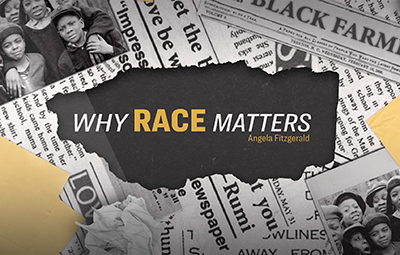





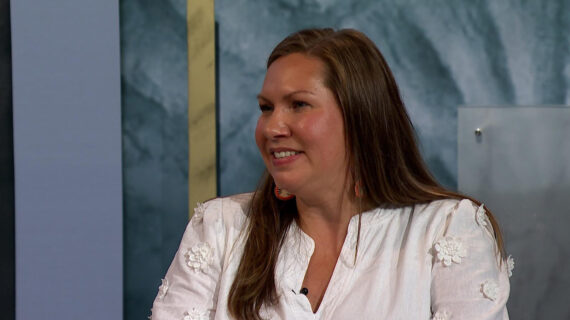
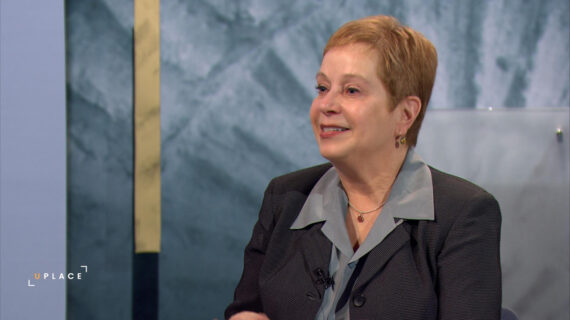

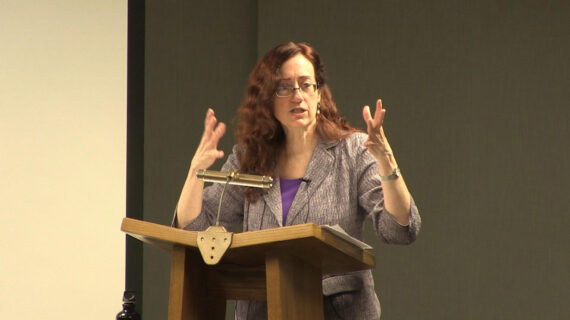
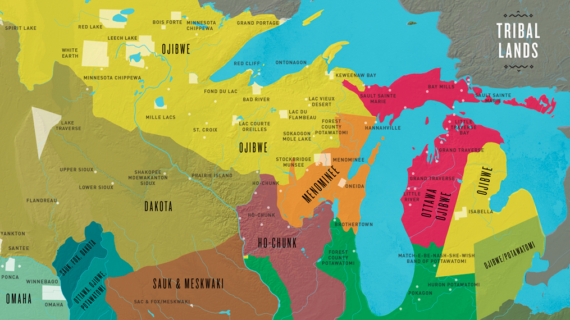
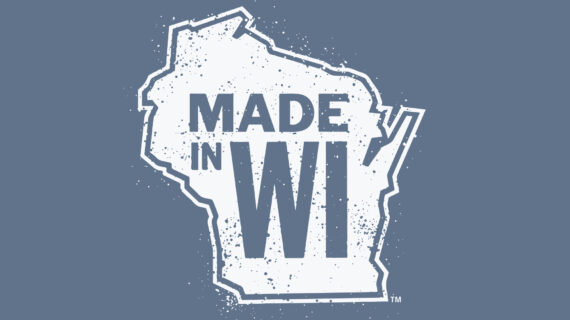

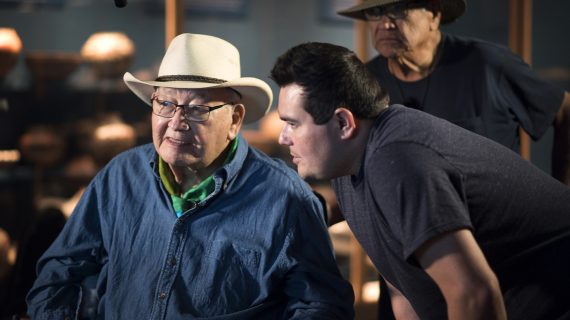



Follow Us